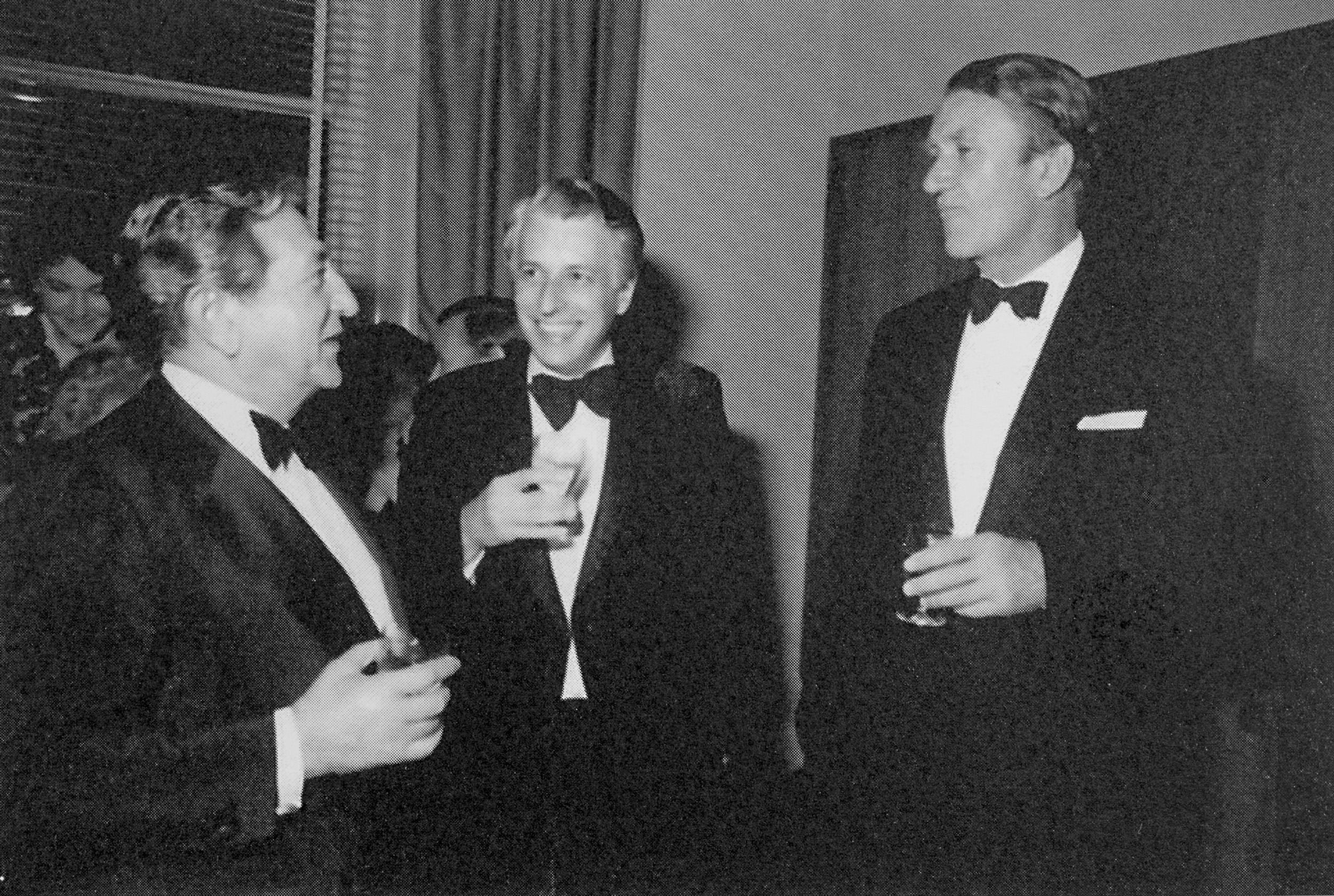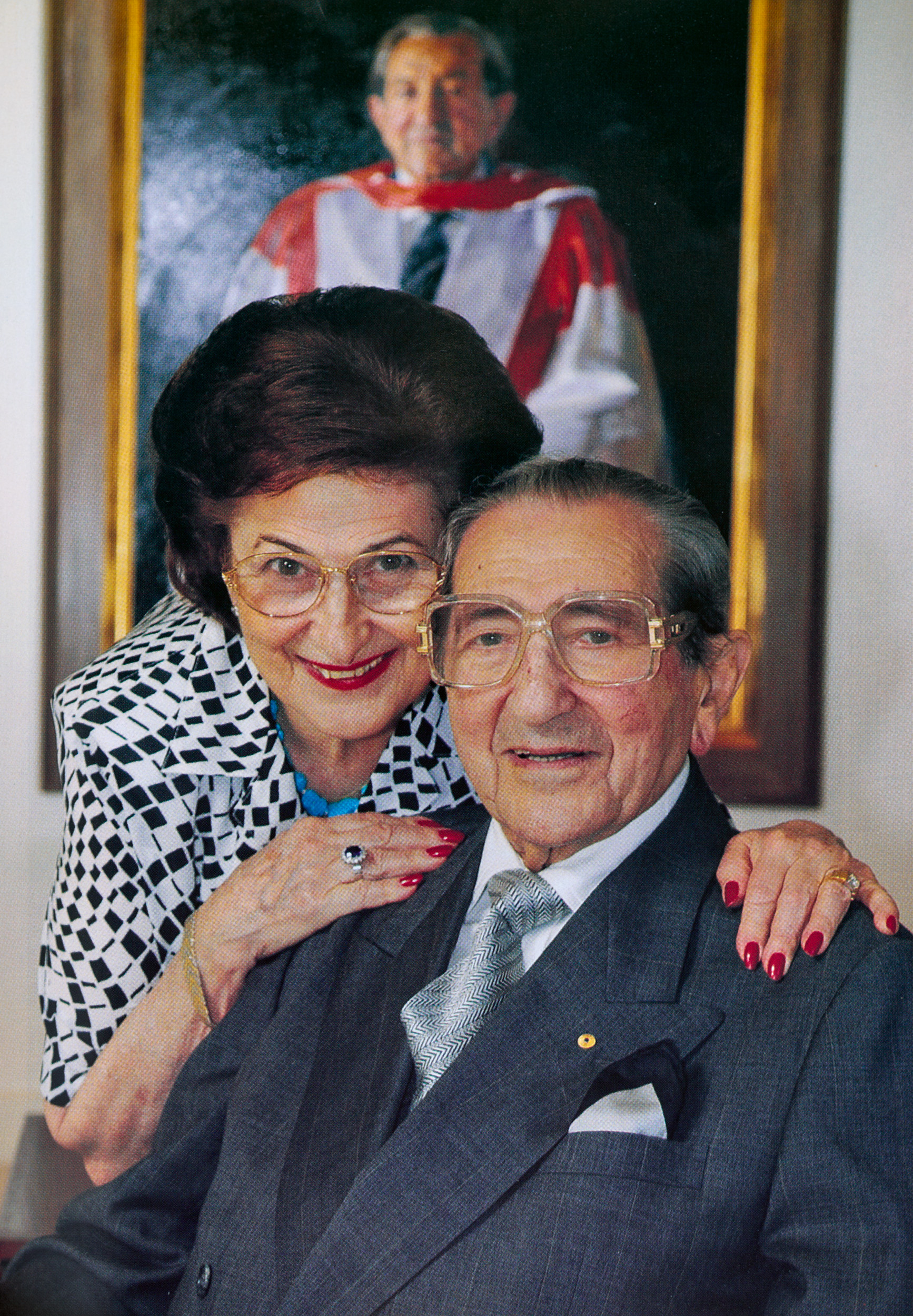Henry Krongold CBE AM (1909 – 2003)
Born in Lodz Poland in 1909, Henry spent the first 3 decades of his life in Poland, across three cities within 120 kilometres of each other: Lodz, Warsaw, and Radom. By his thirtieth year, he was a bureaucrat working in an insurance office, but for a short period in 1927 had also studied painting at the Warsaw School of Fine Arts which nurtured in him the beginnings of what was to become a lifelong appreciation for art.
When Germany invaded Poland on 1 September 1939, Henry was plunged into the ordeal of war, soon worsened by the Nazi persecution of Jews. As the Germans swiftly swept aside the Polish front-line armies (in which Henry was fighting), he had no choice but to abandon all that was dear to him and frantically flee his homeland to avoid being captured as a prisoner of war. Thus, the next 18 months were spent escaping from the ravages of war – an epic, death-defying journey across Europe which saw him travel to Vladivostok and then Japan, before arriving in Melbourne on 27 June 1941.
In his early life in Australia, Henry worked as a manual labourer in the textile industry, learning English from fellow factory workers and through reading the poetry of Lord Byron. Shortly after settling in Australia, he met his future wife-to-be, Dinah, at the Café Lopata in Barkly Street, St Kilda; Dinah was born in Lomza, Poland, and had arrived in Australia with her parents some years earlier. The following year, the couple married on 12 December 1942 and would go on to share three sons together, Ronald, Dennis, and Paul. Throughout their life together, Henry and Dinah remained a loving devoted couple, with Dinah not only fully supporting Henry in all his business ventures and community duties, but also playing an active role in their many varied philanthropic pursuits which greatly enriched education, the arts, and numerous charitable causes.
Naturalised as an Australian citizen in 1947, Henry saw little prospect continuing as a manual labourer and thus, equipped with a vision, keen determination, and a sense of enterprise, he embarked upon the path to launching himself as one of the country’s most successful businessmen and entrepreneurs. From his first venture in 1946 when he and his brother Elek established an Iron Foundry, he subsequently became involved with larger businesses that ranged from importing textile machinery and retail lingerie to textile weaving, fabric wholesaling, and obtaining the Australian and New Zealand franchise to manufacture Schiaparelli hosiery at his Melbourne Charmaine Hosiery factory.
Significantly, in 1959 – 60 Henry joined a syndicate to establish Australian Wool Industries Ltd which involved constructing a plant for processing Australian greasy wool at Ashdod on Israel’s Mediterranean coast as a deliberate attempt to assist both Australia and Israel through exports and employment. During this period, Henry was also very involved in community affairs in his various roles on the Board of Governors of Mt Scopus College from 1958 to 1968 and the Victorian United Israel Appeal (as President from 1963 – 69, and Federal President from 1969 – 73). In later years, propelled by thoughts of lost business opportunities, life’s frailties and an awareness of his growing family and grandchildren now appearing, Henry turned his attention from primarily Jewish fundraising activities to much larger commercial enterprises, including land development at Keilor (on the outskirts of Melbourne) and the Gold Coast, Queensland, together with the acquisition of major properties within the Melbourne CBD , and the acquisition of the iconic Mitchell House on the corner of Elizabeth and Lonsdale streets. In 1976, Henry also took full ownership and control of Capital Carpet Industries Pty Ltd, a large carpet manufacturer producing a significant share of Australia’s total carpet output.
Similarly, during these years, Henry’s charitable energy expanded from a primary focus within the Jewish community to a much broader, state-wide reach, as he and Dinah came to be recognised among the country’s most major philanthropists, particularly in the arts and education sectors. In 1972, Henry and Dinah made a very generous donation to Monash University for the construction of a new learning centre, built over four years, which was then known as The Dinah and Henry Krongold Centre for Exceptional Children. Subsequently, the building has transformed to become Monash Krongold Clinic, Krongold Services for Children and Krongold Research Programs. Henry and Dinah were also major sponsors to many charities, including the Epworth Medical Foundation; Cabrini Hospital; Scotch College Foundation; Mount Scopus College; The Victorian State Opera; United Israel Appeal, and Tel Aviv University.
Krongold with Prime Minister_cmyk.jpg

Malcolm Fraser, on 27 October 1980
As his businesses flourished, Henry found more time to travel overseas where he and Dinah enjoyed many wonderful memories visiting art galleries and museums. The experience reignited Henry’s lifelong (but largely dormant) passion for art and thus, in 1976 the couple embarked upon creating their own collection of both European and Australian art. Initial acquisitions included a sensuous odalisque, Day Dreams by Tudor St George Tucker; Danila Vassilieff’s Street Scene, 1936; a pretty little McCubbin and the luminous Figures Beside the Creek, Stanwell Park, c.1914, by Australian impressionist painter, Emanuel Phillips Fox. Although very knowledgeable about European artists, in the early years Henry felt less conversant with Australian art and thus, enlisted the services of astute Melbourne art dealer, Dr Joseph Brown, to provide guidance and bid at auction on his behalf. Although Henry was not prepared to give Dr Brown carte blanche. There were a handful of occasions where he advised Dr Brown to ‘Go for your life!’ One such work was Sidney Nolan’s masterpiece from the Kelly series, Early Morning Township, 1955, which Henry felt he absolutely should have represented in his collection and accordingly he instructed Dr Brown to ‘Bid and be the last bidder!’
The same year as Henry began building his personal collection of art, he was also invited by Sir Rupert Hamer to join the board of the Art Foundation of Victoria Endowment Trust, established to assist the National Gallery of Victoria which was struggling at the time to compete in an art market of steeply rising prices exacerbated by inflation. During his tenure as Chairman from 1979 – 80, Henry negotiated and financed, with Dinah, the acquisition of Rupert Bunny’s magnificent portrait of Dame Nellie Melba by the Trust for the National Gallery of Victoria, together with two works by Rococo artist François Boucher, and a collection of over seventy works on paper by the greats of American art during the sixties and seventies.
During his lifetime Henry, was the recipient of many awards and honours in recognition of both his active community life and generous philanthropy. In 1978, he was appointed a Commander of the Most Excellent Order of the British Empire (CBE) ‘for outstanding service to the community and in particular to the Arts, young people and industry’, and in 1991, he received an honorary Doctor of Laws from Monash University and became a Doctor of Humanities in Peace from the Albert Einstein International Academy Foundation for his peace-keeping work in Israel. While in 2002, he received a Doctor Philosophy Honoris Causa from the Hebrew University of Jerusalem, and the same year was appointed a Member of the Order of Australia (AM).
He is greatly honoured and respected by all who knew him.
SIDNEY HACK
